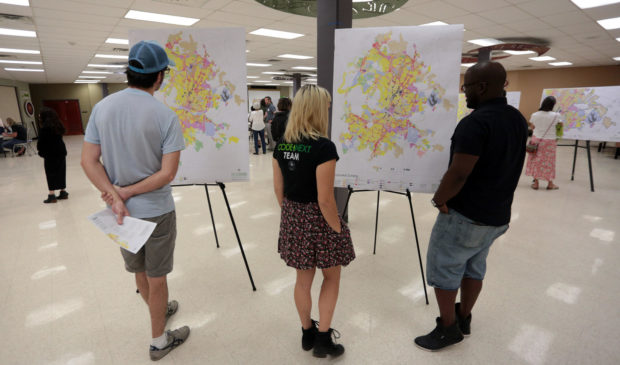Austin aims to simplify the language around CodeNEXT
Tuesday, August 22, 2017 by
Syeda Hasan The upcoming second draft of Austin’s new Land Development Code is expected to eliminate one of its key zoning tools, known as “transect” zones, which focus on a building’s form rather than its use.
In theory, transect zones would allow for a wider range of uses in a given area, as long as a building fits in with the form, or the look and feel, of the surrounding area. Transect zones were a departure from the current Land Development Code, which hasn’t seen an overhaul of this scale since 1984.
But since the release of the first CodeNEXT draft, the idea proved controversial.
Jerry Rusthoven, assistant director of Austin’s Planning and Zoning Department, suggested doing away with transect zones to City Council earlier this summer.
“We’ve heard a lot about criticism that people feel that we have two codes, and so we are looking at combining them into a single spectrum of zones,” he said.
He said the new set of zones should be easier to understand.
“The idea is to try to be more transparent and more clear as to what exactly each zone does,” Rusthoven said. “We have heard criticism that the existing nomenclature that we’re using is too lengthy.”
Rather than taking away the utility of transect zones, said Jorge Rousselin, the project manager on CodeNEXT, the city wants to simplify the language.
“Form standards are not necessarily going away,” he said. “They’re being built in in some of these base zoning districts that you’ll find, but you won’t see the distinction between a T zone, or a transect zone, and a non-T zone.”
For now, CodeNEXT staff has introduced a series of R zones, or residential zones, which aims to provide a simpler naming system. For example, you could build a single home in an R1 zone, two units in an R2 zone, and so on.
Rusthoven said there’s still a lot of work to be done, as city staff work to craft a system for organizing commercial zones. The second draft of CodeNEXT is set to be released next month.
Curious about how we got here? Check out the Austin Monitor’s CodeNEXT Timeline.
This story was produced as part of the Austin Monitor’s reporting partnership with KUT. Photo by Jorge Sanhueza-Lyon/KUT.
The Austin Monitor’s work is made possible by donations from the community. Though our reporting covers donors from time to time, we are careful to keep business and editorial efforts separate while maintaining transparency. A complete list of donors is available here, and our code of ethics is explained here.
You're a community leader
And we’re honored you look to us for serious, in-depth news. You know a strong community needs local and dedicated watchdog reporting. We’re here for you and that won’t change. Now will you take the powerful next step and support our nonprofit news organization?



